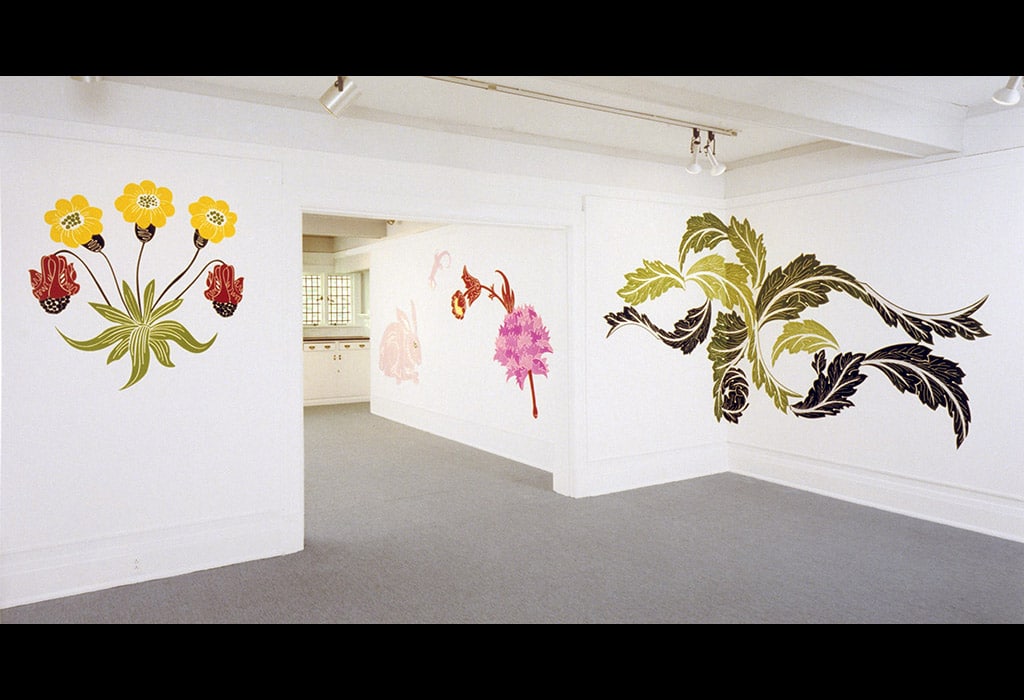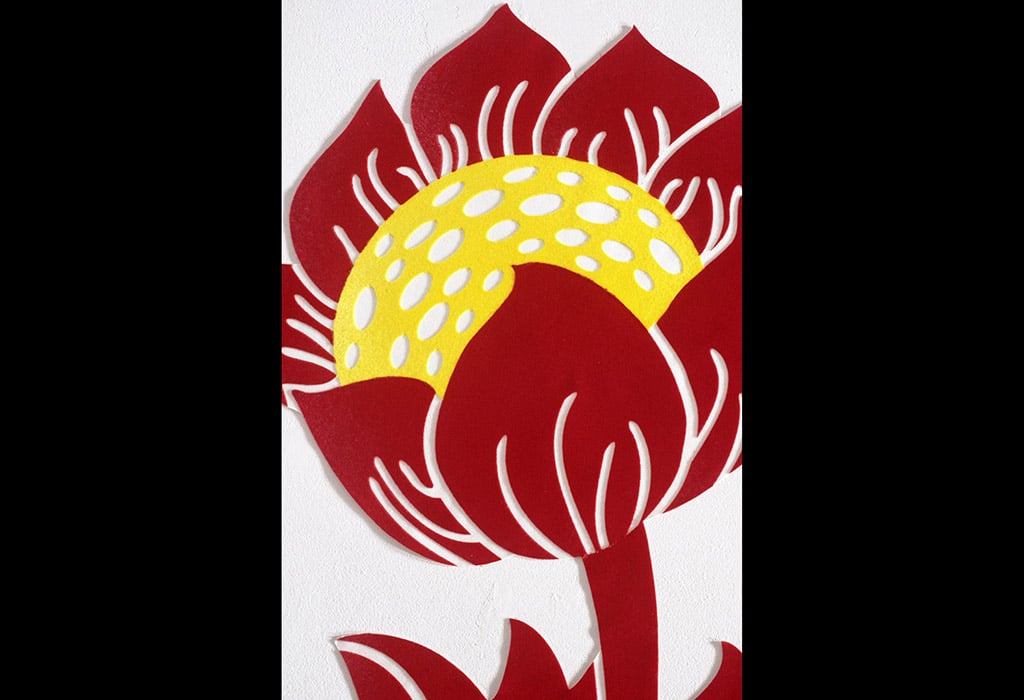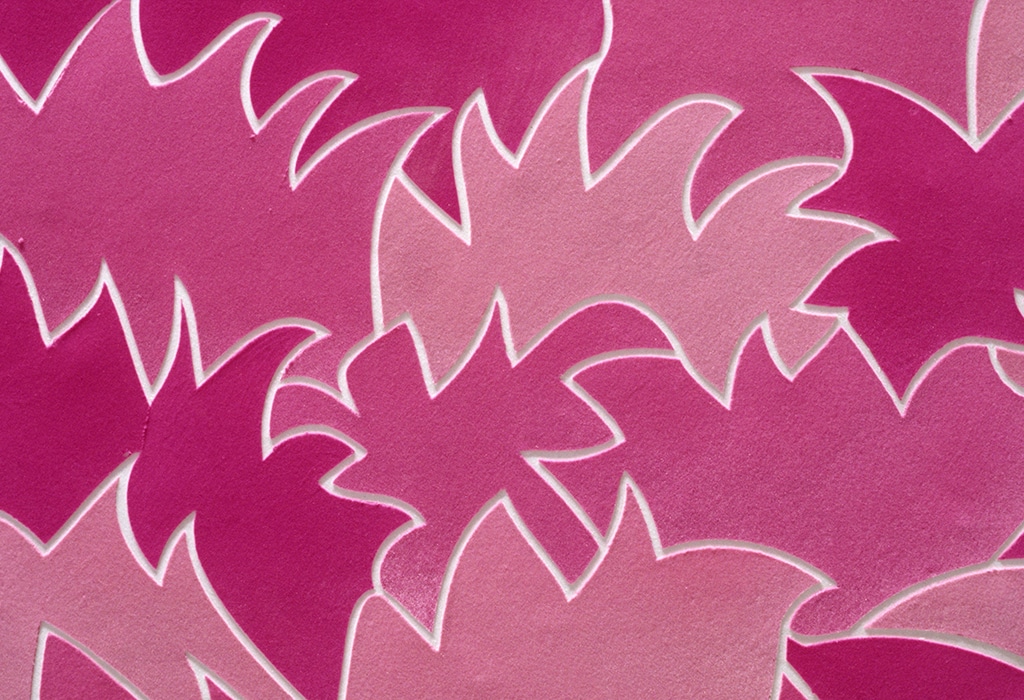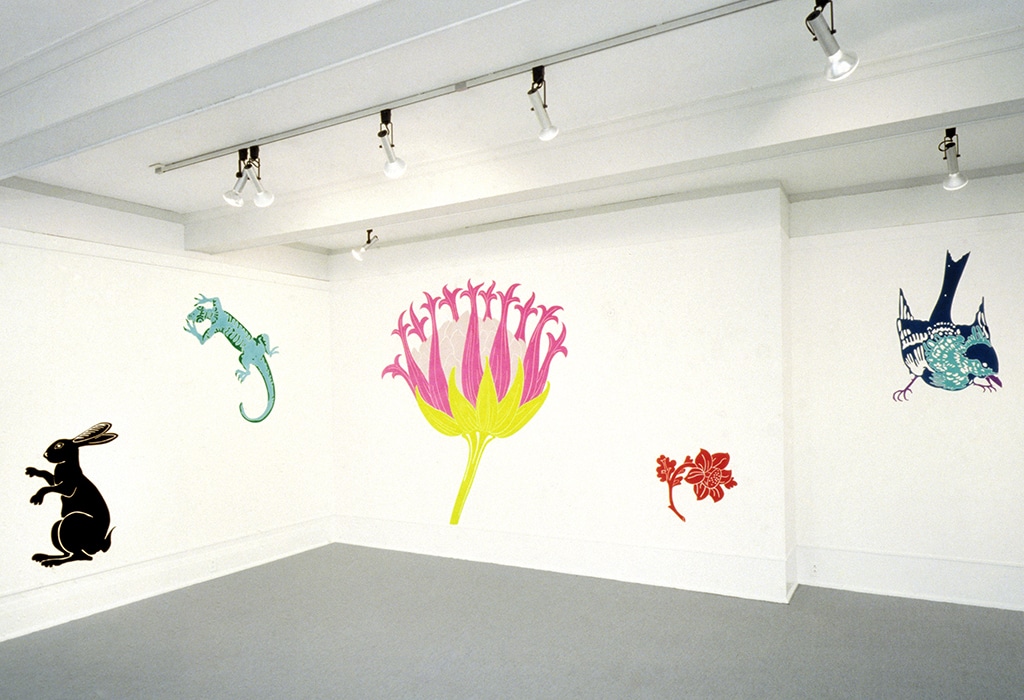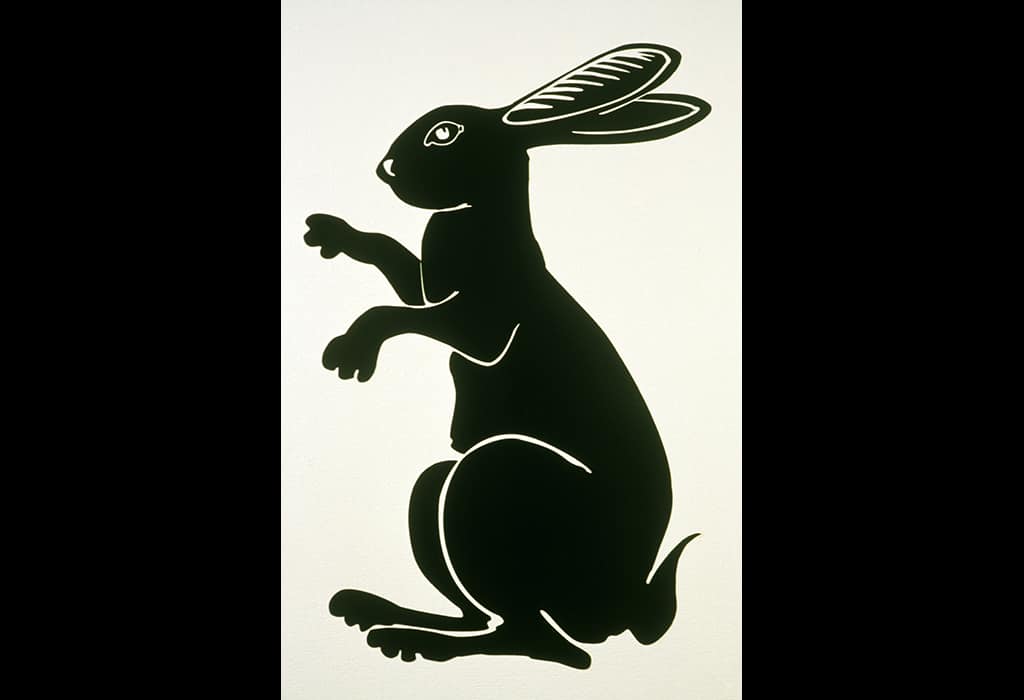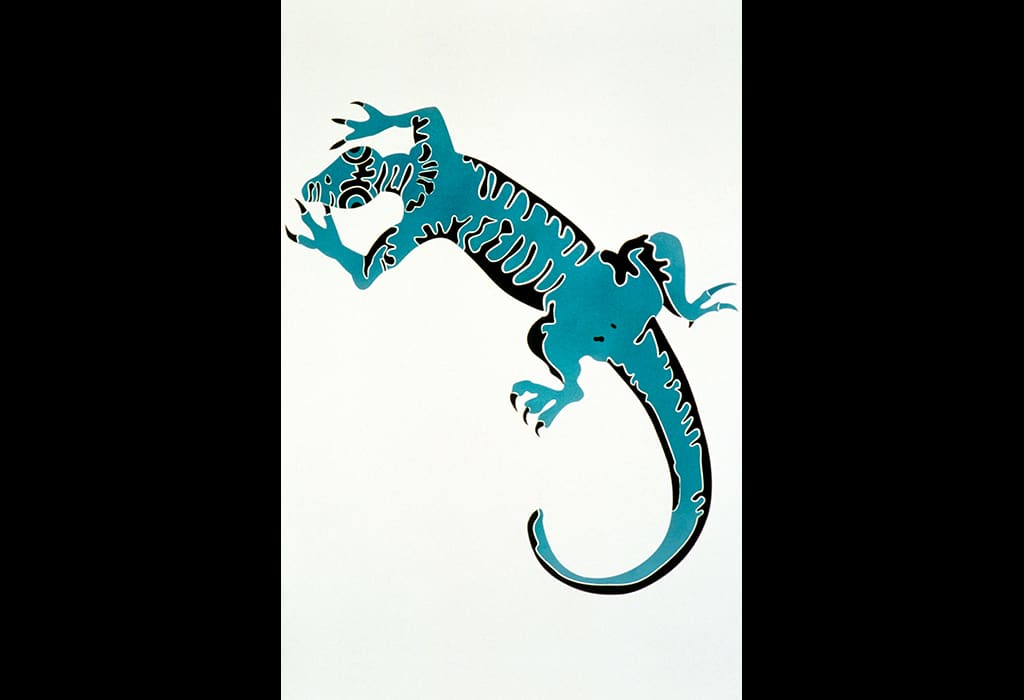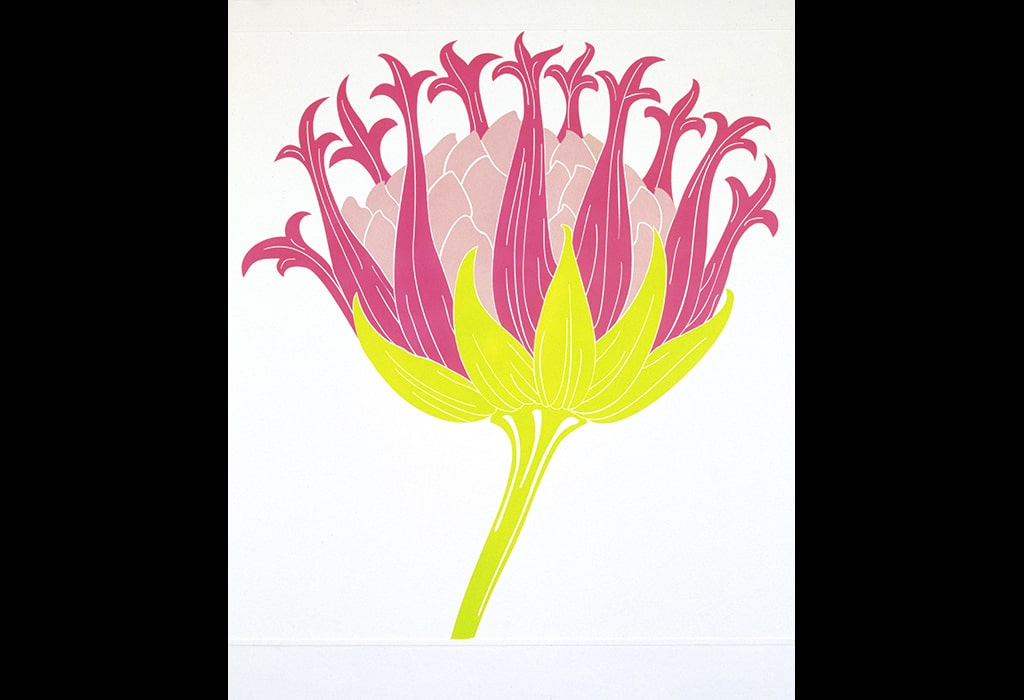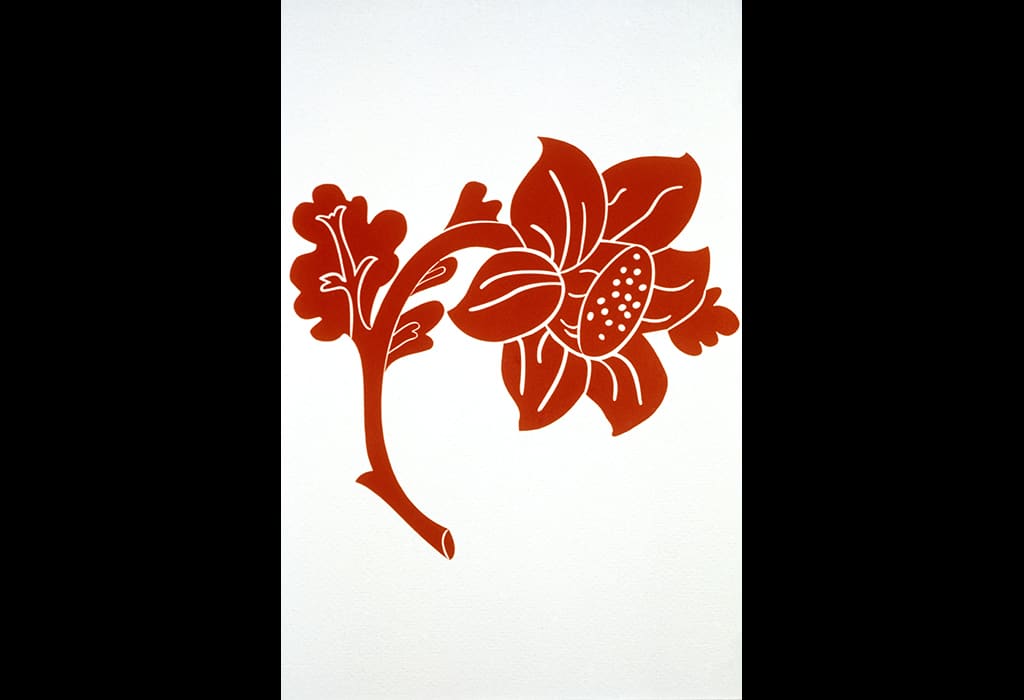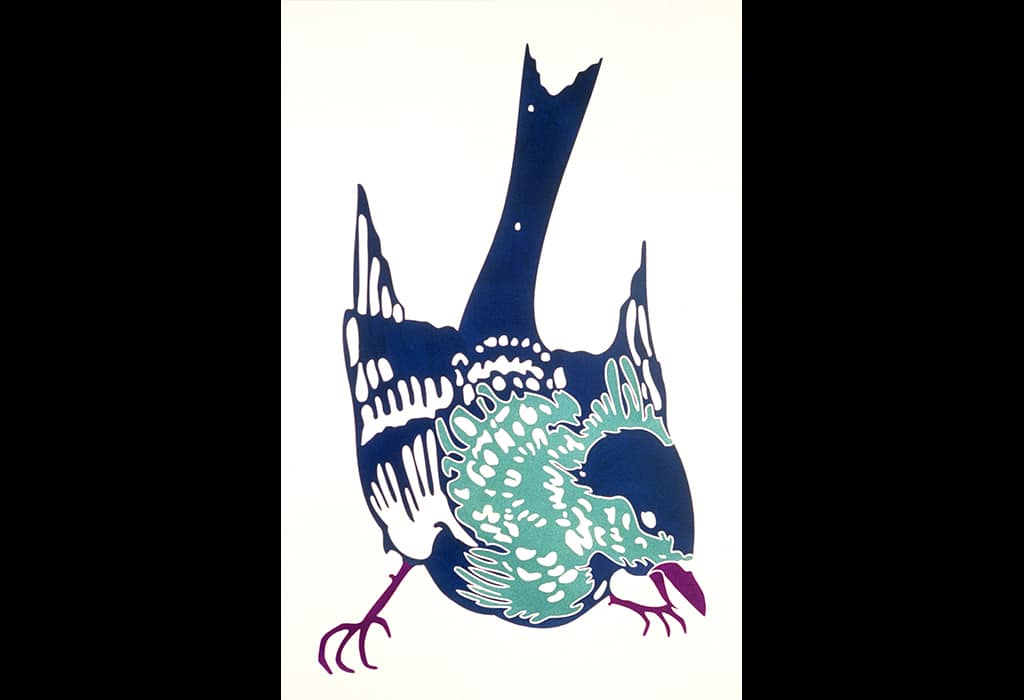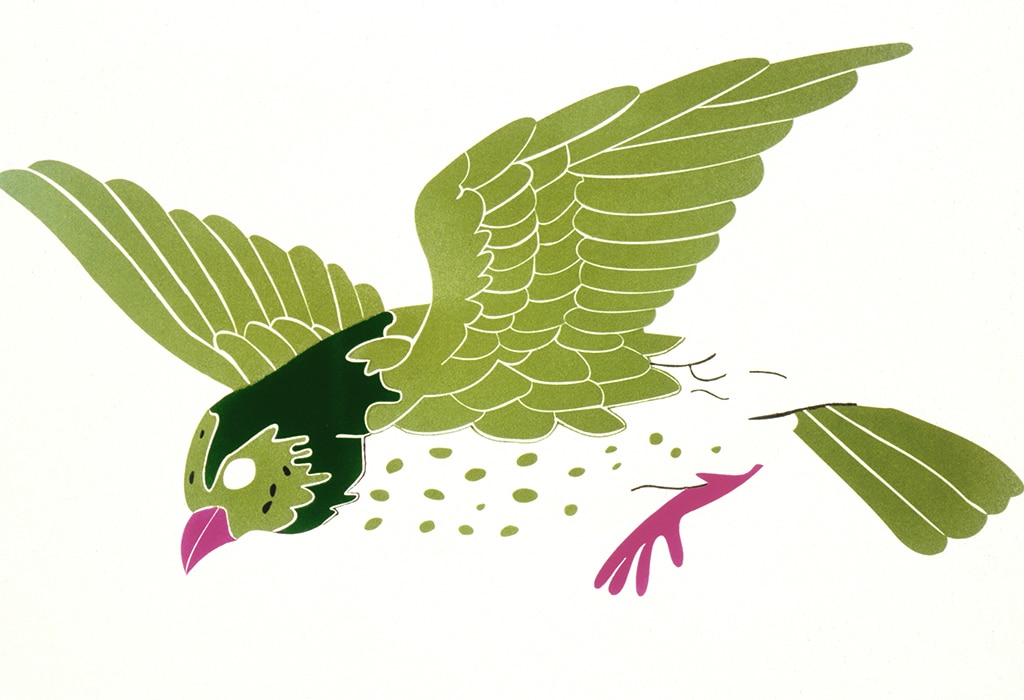Jewel Point 1996
A flock of birds and flowers converges on the walls of the gallery, as if something inbred and long hidden breeds through into ribald being. The effect is surprisingly refined looking, despite being monstrous in proportions to the rooms it inhabits. Each of the proffered emblems originated as a minute motif from the British Arts and Crafts period, and when the visitor learns that the Burnaby Art Gallery (built as a private estate in 1910) is itself a fine example of this style, the visual paradox of monstrosity and refinement begins to makes sense. William Morris (1834-1896) is generally avowed as the father of the Arts and Crafts style, and most of the details Gisele Amantea is using in Jewel Point have been taken from one or another of his celebrated wallpapers. These vastly blown up ‘things’ might look, at first glace, like something imported, as if they were, say, flattened out remnants of Mardi Gras costumes. Their formal properties – bright, even gaudy colours applied by flocking the surfaces of the motifs – evoke popular rather than high cultures while giving counterpoint to the ‘tastefully muted’ tones used in the Arts and Crafts style. Rather than simply functioning like ‘imports’ then, the work oscillates between ‘High’ and ‘Low.’ The motifs are more like free floating fragments – loosed, if somewhat lewdly, from the archives of the historically constricted. They are some species of the ‘return of the repressed.’
Kati Campbell from the publicationJewel Point
Jewel Point is composed of twenty-six image-objects in a range of sizes. They were placed in a random order on the walls of the gallery. The exhibition was curated by Karen Henry.
Dimensions: variable
Media: flock on paper backed cotton sateen fabric
Collection: Art Gallery of Windsor
Photography: Robert Keziere and Trevor Mills
